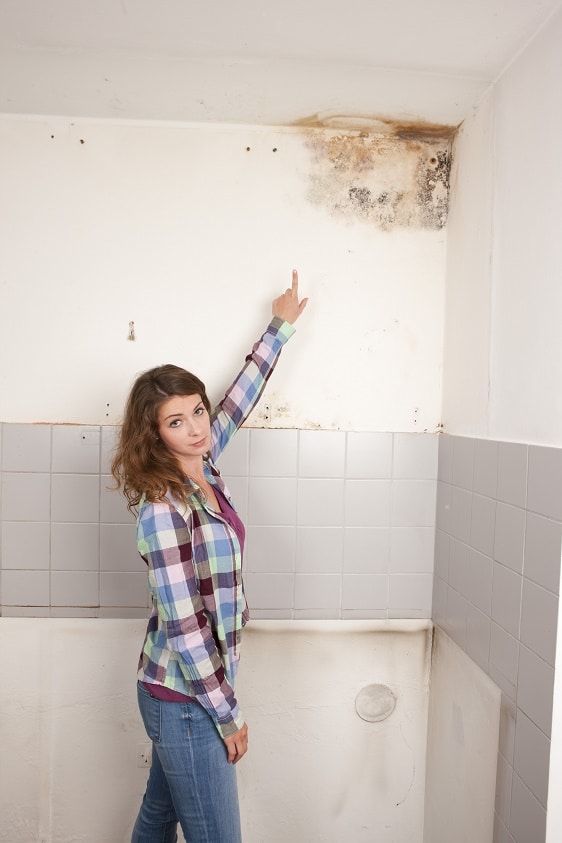Types of Mold Typically Found in a Home
- Home
- /
- Mold Remediation
- /
- Types of Mold
Indoor mold growth typically occurs in damp, poorly ventilated areas where mold spores can thrive. These microscopic spores float through the air, settling on surfaces where conditions are favorable. Common locations include bathrooms, basements, and around windows where condensation forms. Identifying the specific type of mold in your home is the first step toward appropriate remediation.
We’ll explore common mold varieties including Acremonium, Alternaria, and Trichoderma, examining their appearance, typical growth locations, and potential health risks. Proper identification helps determine whether you can safely handle removal yourself or should seek professional assistance for more hazardous types like black mold.
Effective mold management requires both preventive strategies and proper remediation techniques. Understanding the sources of mold growth and addressing health concerns are essential steps in maintaining a safe living environment.
Mold thrives in moist environments, making humidity control our first line of defense. We recommend keeping indoor humidity levels below 50% throughout the day to inhibit spore growth. It’s important to dry any wetted materials within 48 hours of becoming wet. For persistent dampness, consider using dehumidifiers or moisture-absorbing products.
Common Types and Characteristics of Mold
Aureobasidium and Alternaria
Alternaria is one of the most common outdoor molds that frequently makes its way indoors. It appears as dark green or brown spots with a velvety texture. We often find it growing on damp areas like shower enclosures, under leaking sinks, and around windows.
Both these molds are considered allergenic, meaning they can trigger allergic symptoms including:
- Sneezing and runny nose
- Itchy or watery eyes
- Skin rashes in some cases
People with asthma or existing respiratory conditions may experience more severe reactions when exposed to these mold types.
Penicillium, Aspergillus, and Cladosporium
Aspergillus includes over 185 species with colors ranging from yellow-green to black. This versatile mold grows on many materials and can spread quickly. Certain Aspergillus species produce mycotoxins that may cause respiratory infections in people with weakened immune systems.
Cladosporium appears olive-green to brown or black and can grow even at lower temperatures than many other molds. It frequently colonizes fabrics, wood surfaces, and HVAC systems.
These three mold types represent some of the most common indoor molds according to the CDC. They primarily cause allergic reactions but can create more serious health issues in individuals with compromised immune systems or chronic lung conditions.
Stachybotrys and Toxic Black Mold
This mold type belongs to the toxigenic classification, meaning it can produce mycotoxins that may cause health problems. Exposure may lead to:
Chronic coughing and sneezing
Irritation to the eyes and mucous membranes
Persistent headaches
Chronic fatigue
Despite its intimidating reputation, not all black-colored molds are Stachybotrys, and not all Stachybotrys produces significant toxins. The presence of black mold should prompt professional assessment rather than panic.
We recommend professional remediation when Stachybotrys is identified, as improper handling can release spores and potentially increase exposure.
Other Notable Types
Chaetomium has a cotton-like texture and changes from white to gray and eventually black as it matures. This mold emits a distinctive musty odor and commonly grows on water-damaged drywall and wood. It may contribute to certain health issues in susceptible individuals.
Ulocladium requires very wet conditions and often appears in homes after water damage or flooding. It resembles black spots and frequently coexists with other molds like Alternaria and Chaetomium.
Botrytis or “gray mold” appears gray or brown and primarily affects plants and fruits. We occasionally find it in homes with excessive humidity, particularly around houseplants or improperly stored produce.
Health Implications and Safety Measures
- Coughing and wheezing
- Nasal congestion
- Eye irritation
- Skin rashes
Some molds produce mycotoxins, which are potentially harmful substances that can cause more serious health effects in sensitive individuals. People with allergies, asthma, or compromised immune systems face greater risks from mold exposure.

Reasons Why Customers
Choose Our Experienced Team

Upfront pricing

Highly rated team

Decades of experience

Skilled and trained technicians

24/7 emergency services

Eco-Friendly & saving solutions

1000's of satisfied customers

Certified and trained techs

We work with your insurance company

